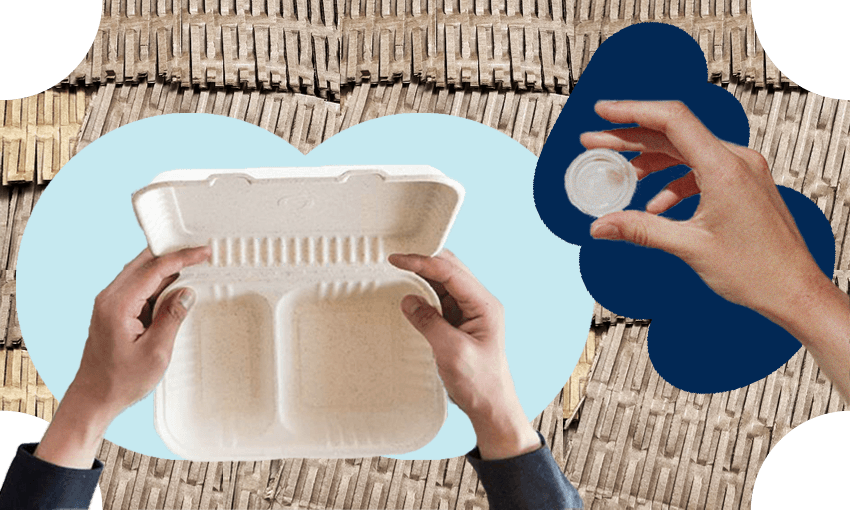The market for sustainable products is growing as global waste continues to have a huge impact on the environment. But often it’s not the product itself that has a big footprint – it’s what it’s wrapped in.
Whether it’s a tube of dried-out mascara or a bottle of expired foundation, tossing out old make-up isn’t always easy, even for professionals like Aleph Beauty founder Emma Peters.
“Through my years as a make-up artist in the beauty industry, I ended up with drawers and drawers full of products. It gutted me how they would just accumulate. I’d never want to throw anything out because I couldn’t bear putting all that waste into landfill.”
Since launching in 2017, using fewer resources with less waste has been an integral part of Aleph’s ethos, but the question of what would happen to its jars and containers – empty or not – still remained. To avoid adding to the problem, Aleph decided it needed to “close the loop”, launching a take-back scheme allowing customers to send their products back to the brand via collection points at retailers. Once collected, Aleph dismantles all these products in-house and finds the correct recycling stream for each component. With its glass jars, these are cleaned and reused, or – if the jar is cracked or chipped – crushed down into sand used for pool filters and racetracks.
Sustainable packaging isn’t just a nice-to-have, it’s an increasingly vital part of doing business in today’s world. Plastic waste is undoubtedly one of the biggest problems plaguing our planet, and packaging is by far its biggest proponent, estimated to contribute more than 140 million tonnes to the plastic waste problem globally per year. As a result, consumers and governments have increasingly been pushing for change, pressuring businesses to shift the way their products are packaged to be less harmful to the environment.
“Consumers are demanding more sustainable goods and services, retailers are expecting more from their suppliers, and international partners are facing all sorts of pressures to be more sustainable,” says New Zealand Trade and Enterprise (NZTE) sustainability advisor Chris Lijzenga. “Some countries are moving quicker than others in adopting sustainability measures and requiring more transparency or progress, but certainly the whole world is moving in this direction and I don’t think that’s going to change anytime soon.”
For exporters, however, the difficulty lies in the fact that every region, country and even state or province has its own specific rules and regulations when it comes to sustainability. In Europe, for example, having sustainability baked into your product or service is already becoming a necessity to having a significant long-term presence in the region. In the European Union (EU), “first distributors” of packaged products (manufacturers, importers, or foreign sellers selling directly to consumers) are required to take responsibility for the packaging waste that comes with their services or products. Individual countries within the EU also have their own measures. France, for instance, introduced a packaging ban for fruits and vegetables as part of its ultimate goal to phase out all single-use plastics by 2040.
Meanwhile, in the US, rules differ from state to state, with places like Vermont enforcing a ban on foam packaging, polystyrene food containers, and single-use plastic bags, cups and stirrers while most other states don’t. In China, a five-year roadmap laid out in 2020 to reduce plastic waste has seen items such as non-degradable plastic bags and cosmetics containing microbeads being prohibited. However, China is also notable for its ban on recycled plastics for food packaging, a rule that also affects imports from New Zealand.
“For exporters, packaging can be a minefield of complexity that also happens to be changing rapidly all the time,” says Lijzenga. “A lot of the time it’s trying to find the least worst option and recognising there’s no silver bullet solution. Every business has their own journey to go on in this space, but in most cases, it’s about making packaging that’s as simple and easy as possible to sort, disassemble and recycle.”
With increasingly stringent laws and regulations combined with greater consumer knowledge, getting things right is more important than ever, not just for the planet but for company purse strings too. Earlier this year, coffee company Keurig agreed to pay US$10 million to settle a long-running class action lawsuit alleging the business deceptively advertised its pods as “recyclable” when they weren’t actually accepted for recycling in many areas.
“Brands need to realise how important it is to focus on making their packaging actually sustainable,” says Nikki Withington, founder of packaging consultancy Square One. “They have an extended producer responsibility to make sure that whatever packaging they’re putting out there can actually find a home in the easiest way possible. It’s the brand’s responsibility to encourage the consumer to do that.”
However, even with the best of intentions, sustainable packaging efforts can sometimes end up doing more harm than good. While great in theory, compostable packaging, for example, often ends up in landfill or recycling centres where they shouldn’t be, due to the lack of infrastructure to collect compostables commercially. Earlier this year, the Ministry for the Environment even issued a warning about compostable packaging, likening its use and disposal to single-use plastics.
“Nobody really wants compostable packaging – it’s not nutrient dense and it’s not beneficial to composts. Furthermore, most people aren’t composting properly anyway,” says Withington. “Then there’s the added danger of what’s in those materials. What’s coming to light now is that some of those contain some nasty forever chemicals that could actually be hazardous to have building up in the soil.”
Ultimately, a lot of the difficulty and confusion around packaging comes down to the lack of knowledge, advice and collective expertise available to businesses. In an effort to combat this problem, NZTE has made freely available a series of articles written by Withington dealing with topics such as international targets and regulations and the pros and cons of various materials like cardboard and glass.
“Sharing information can make a huge difference,” says Withington. “Often I find when brands try and do it themselves, they’ll usually stumble along and try a bunch of things that don’t work when they could save so much time and money if they just have the right information or by leaning on the people who know what they’re doing.”
Armed with the right information and with a bit of investment and commitment, Withington insists there are many ways brands can reduce their harmful impacts and get ahead of the curve. This can involve brands working together or learning from each other to produce standardised packaging that can be easily recycled.
“A lot of brands want to be different and stand out with their packaging, but actually we should be trying to make sure that all packaging can go to the right places and to do that we shouldn’t be too wildly different in the materials that we use,” she says. “Go wild on the artwork, branding or advertising, but when it comes to the physical packaging, brands should try and conform to other packaging that can be recycled so it’s not disrupting the infrastructure that we’re setting up.”
While companies like Aleph are dedicated to a “closed loop” packaging philosophy to reduce its impact on the environment, opting for “stripped down” packaging is another approach, one trailblazed by the beauty brand Ethique which swaps wasteful plastic packaging for things like shampoo and lotion for a simple, concentrated stick or bar instead. Today, 10 years on from its inception, Ethique is a sustainability success story – a global company now exporting its products to 22 countries and with offices in New Zealand, Australia, the US and the UK.
Another brand meaningfully reducing waste in its packaging is Cleanery, whose personal care and cleaning products come in stick sachets containing only its most functional ingredients. The product is designed so that the powder in the sachet is poured into a reusable spray bottle with water added by the consumer before use.
As the driving force behind two of our greatest environmental crises – climate change and pollution – the convenience and efficiency packaging once afforded businesses and consumers will no longer make financial sense very soon. The cost of packaging, especially single-use packaging, is rapidly rising, as is the need to fundamentally rethink how we produce, design and consume our goods.
Ultimately, the best packaging is no packaging at all, and while that may seem like an insurmountable challenge now, our future depends on us rising to the task. From crisis comes opportunity, and while a number of innovative companies have already taken the plunge to lead the way, it’s an opportunity we can’t afford to seize alone.
Going Global is a pop-up podcast series produced in partnership with NZTE. Listen on the Business is Boring feed wherever you get your podcasts.


